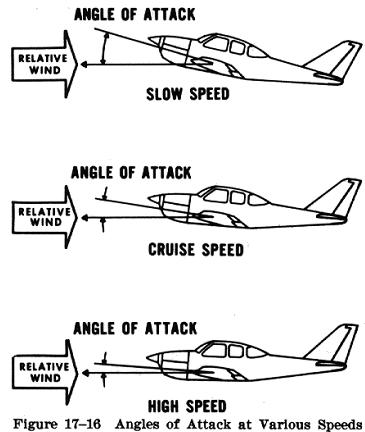Straight and level flight may be sustained at speeds from very slow to very fast. The pilot must coordinate angle of attack and thrust in all speed regimes if the airplane is to be held in level flight. Roughly, these regimes can be grouped in three categories; low speed flight, cruising flight, and high speed flight.
When the airspeed is low, the angle of attack must be relatively high to increase lift if the balance between lift and weight is to be maintained (Fig. 17-16). If thrust decreases and airspeed decreases, lift becomes less than weight and the airplane will start to descend. To maintain level flight, the pilot can increase the angle of attack an amount which will generate a lift force again equal to the weight of the airplane and while the airplane will be flying more slowly, it will still maintain level flight if the pilot has properly coordinated thrust and angle of attack.
Straight and level flight in the slow speed regime provides some interesting conditions relative to the equilibrium of forces, because with the airplane in a nose high attitude there is a vertical component of thrust which helps support the airplane.
